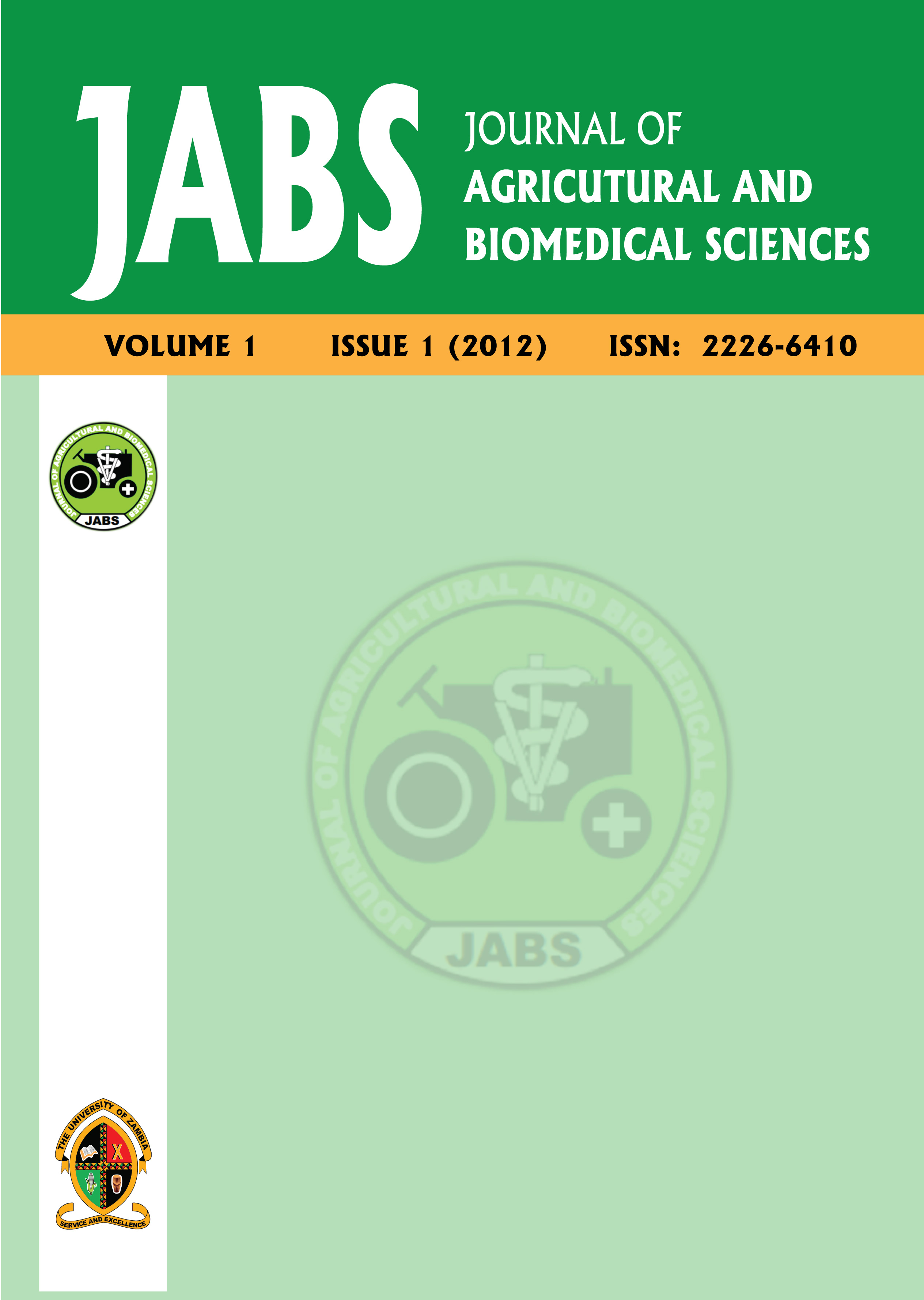Knowledge, Attitude and Practice survey on Indoor Residual Spraying (IRS) in Linda Compound
Vol 1
Keywords:
Indoor Residual Spraying (IRS), IRS Concerns, Malaria Prevention
Abstract
Background:There are wide gaps in empirical and perceptual baseline data and information on obtaining knowledge, attitudes and practices with respect to Indoor Residual Spraying (IRS). The main objective of this study was to assess the levels of Knowledge, Attitude and Practice that Linda residents have towards Indoor Residual Spraying. Materials and Methods: A descriptive cross-sectional study was carried out in Linda compound. A multi-stage sampling method was used to select households for the study and a purposive availability sampling method was used to constitute focus group discussions. Results: A total of 387 respondents took part in the study. The levels of knowledge on malaria and IRS were 84.2 percent and 80.9 percent, respectively. However, the level of IRS utilisation was57.8percent. Age and knowledge of IRS were independently associated with acceptability of IRS. On each birthday, respondents were 3 percent more likely to accept IRS. Compared to respondents who had no knowledge of IRS, those who had knowledge were 77 percent more likely to accept IRS. Conclusion:The level of IRS utilisation was low. To dispel various misconceptions and myths regarding IRS and indigenous methods of Malaria prevention, healthcare providers need to disseminate information about what IRS actually does.References
1. Lewison G, Srivastava D. Malaria research, 1980–2004, and the burden of disease. Acta Tropica 2008; 106: 96–103.
2. Kager PA. Malaria control: constraints and opportunities. Tropical Medicine & International Health 2002; 7: 1042–1046.
3. Deressa W, Fantahun M, Ali, A. Malaria-related Mortality Based on Verbal Autopsy in an Area of Low Endemicity in a Predominantly Rural Population in Ethiopia. Malaria Journal 2007; 6:128.
4. WHO. Indoor residual spraying. Use of indoor residual spraying for scaling up global malaria control and elimination. The W.H.O Position Statement, World Health Organization, 2006.
5. Phiri G. Interview on the IRS Spraying Program. Ministry of Health Cleansing Depot, 2009.
6. Bermejo A, Bekui A. Community participation in disease control. Social Science & Medicine 1993; 36: 1145–1150.
7. Rosenbaum J, Nathan MB, Ragoonanansingh R. Community participation in Dengue prevention and control – a survey of knowledge, attitudes, and practice in Trinidad-and-Tobago. American Journal of Tropical Medicine and Hygiene 1995; 53(2): 111–117.
8. Toledo ME, Baly A, Vanlerberghe V. The unbearable lightness of technocratic efforts at dengue control. Tropical Medicine & International Health 2008; 13(5): 728–736.
9. Govere J, Durrheim D, la Grange K, Mabuza A, Rooman M. Community knowledge and perceptions about malaria and practices influencing malaria control in Mpumalanga Province. South Africa. South African Medical Journal 2000; 90(6): 611–616.
10. Rodriguez AD, Penilla RP, Rodriguez MH, Hemingway J, TrejoA,Hernandez-AvilaJE. Acceptability and perceived side effects of insecticide indoor residual spraying under different resistance management strategies. Salud Publica De Mexico 2006; 48(4): 317–324.
2. Kager PA. Malaria control: constraints and opportunities. Tropical Medicine & International Health 2002; 7: 1042–1046.
3. Deressa W, Fantahun M, Ali, A. Malaria-related Mortality Based on Verbal Autopsy in an Area of Low Endemicity in a Predominantly Rural Population in Ethiopia. Malaria Journal 2007; 6:128.
4. WHO. Indoor residual spraying. Use of indoor residual spraying for scaling up global malaria control and elimination. The W.H.O Position Statement, World Health Organization, 2006.
5. Phiri G. Interview on the IRS Spraying Program. Ministry of Health Cleansing Depot, 2009.
6. Bermejo A, Bekui A. Community participation in disease control. Social Science & Medicine 1993; 36: 1145–1150.
7. Rosenbaum J, Nathan MB, Ragoonanansingh R. Community participation in Dengue prevention and control – a survey of knowledge, attitudes, and practice in Trinidad-and-Tobago. American Journal of Tropical Medicine and Hygiene 1995; 53(2): 111–117.
8. Toledo ME, Baly A, Vanlerberghe V. The unbearable lightness of technocratic efforts at dengue control. Tropical Medicine & International Health 2008; 13(5): 728–736.
9. Govere J, Durrheim D, la Grange K, Mabuza A, Rooman M. Community knowledge and perceptions about malaria and practices influencing malaria control in Mpumalanga Province. South Africa. South African Medical Journal 2000; 90(6): 611–616.
10. Rodriguez AD, Penilla RP, Rodriguez MH, Hemingway J, TrejoA,Hernandez-AvilaJE. Acceptability and perceived side effects of insecticide indoor residual spraying under different resistance management strategies. Salud Publica De Mexico 2006; 48(4): 317–324.
Published
2012-03-31
How to Cite
1.
Malulu L, Siziya S. Knowledge, Attitude and Practice survey on Indoor Residual Spraying (IRS) in Linda Compound. Journal of Agricultural and Biomedical Sciences [Internet]. 31Mar.2012 [cited 15Oct.2025];1(1):12-5. Available from: https://journals.unza.zm/index.php/JABS/article/view/330
Section
Biomedical Sciences
Copyright: ©️ JABS. Articles in this journal are distributed under the terms of the Creative Commons Attribution License Creative Commons Attribution License (CC BY), which permits unrestricted use, distribution, and reproduction in any medium, provided the original author and source are credited.

